Punta del Este, located in southern Uruguay’s Maldonado Department, is a glamorous coastal resort that draws visitors from across Latin America. Known for its pristine beaches, high-rise apartments, and elegant neighbourhoods, the city is set on a narrow spit of land that divides the Atlantic Ocean from the Río de la Plata. With a population of around 12,000, which swells dramatically in peak tourist seasons, Punta del Este offers an upscale retreat for holidaymakers, making it one of South America’s most exclusive beach destinations
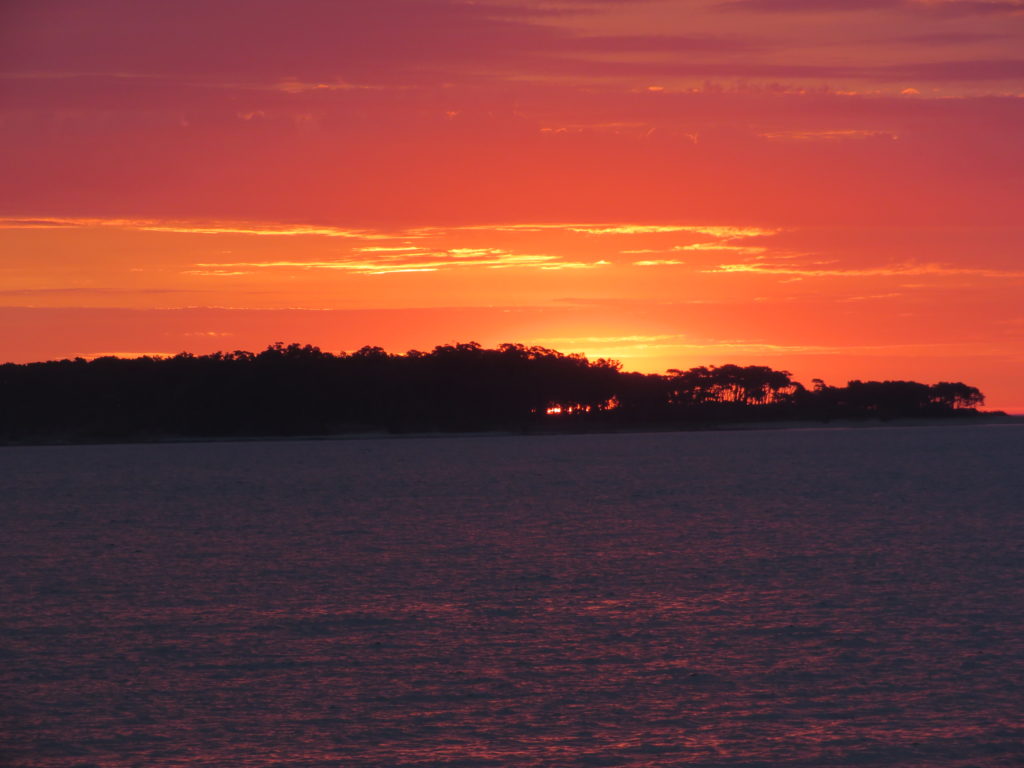
Our Journey to Punta del Este
Our journey to Punta del Este began with an overnight bus trip from Porto Alegre. While sleep wasn’t the most comfortable, the ride proved incredibly efficient. We appreciated the hot food, drinks, blankets, and working Wi-Fi on board, making the experience easier. A hostess took care of the border formalities, which allowed us to relax.
Crossing into Uruguay at dawn, we were struck by the neat and orderly countryside. The well-maintained roadsides and organised farmlands painted a pastoral picture of Uruguay’s rural regions, where British cattle breeds thrive on the pampas grass. Upon arrival, the town’s cleanliness continued to impress. We stayed at the Petit Chateu Boutique Hotel, just a couple of blocks back from the waterfront, where the elegance of the neighbourhood matched the sophistication of the resort itself.
Geography & Climate
Punta del Este is located on a narrow peninsula stretching between the Atlantic Ocean and Río de la Plata, offering beaches with varied conditions depending on which side of the spit you’re on. The Atlantic-facing Playa Brava has powerful waves ideal for surfing, while the calmer waters of Playa Mansa on the Río de la Plata side cater to those looking for a more relaxing swim.
The climate is humid subtropical, characterised by warm summers, averaging 25°C (77°F), and mild winters, with temperatures around 10°C (50°F).The warm, sunny days are ideal for beachgoers, while the mild winters encourage leisurely walks along the seafront and visits to the town’s chic cafes and boutiques. The high season, however, is during the summer months, when tourists from Latin America, particularly from Argentina, flood the city.
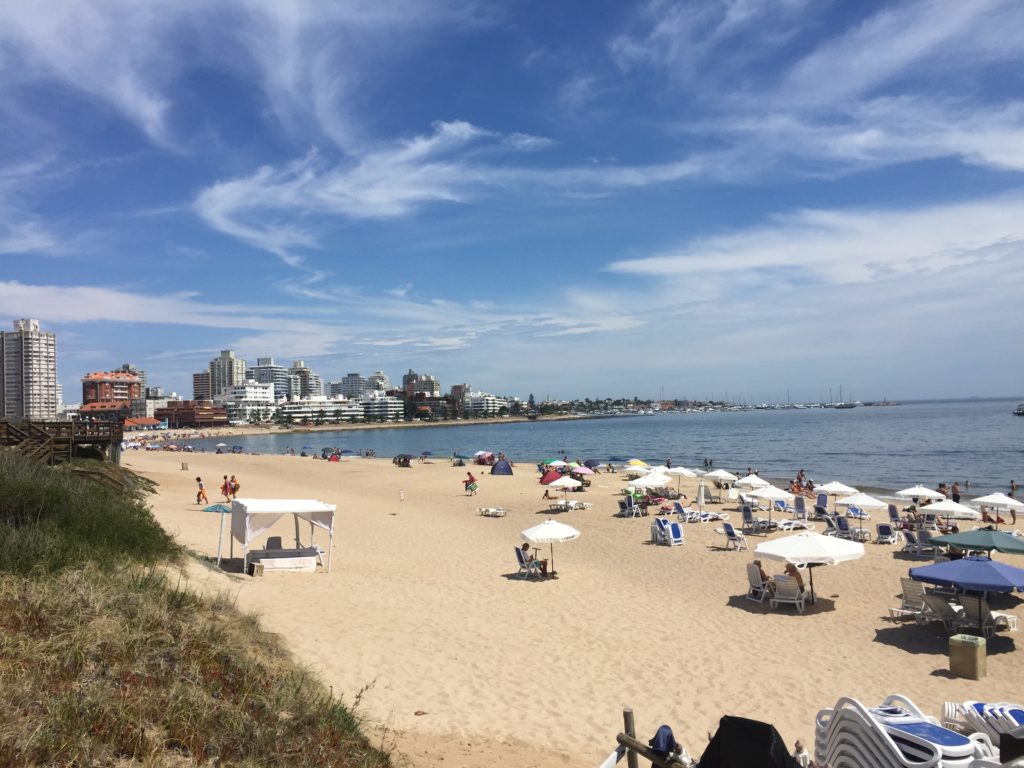
History & Economy
Founded in the early 19th century, Punta del Este has grown from a small fishing village into a cosmopolitan resort town known for attracting Latin America’s wealthy elite. It was formally established as a city in 1907, and its development surged with the rise of tourism from neighbouring countries, particularly Argentina and Brazil. The city’s growth was propelled by investments in real estate and tourism infrastructure, resulting in its modern skyline, a mix of elegant beach houses and high-rise apartment buildings. Its historic roots are still visible in the older section of the city, which contrasts with its modern skyline and luxury resorts.
Economically, the city thrives on tourism, and its reputation as a playground for the rich has only increased over time. Punta del Este has become a centre for international investment, not just in property but also as a secure financial hub. Banking and real estate are significant sectors, buoyed by the city’s ability to attract high-net-worth individuals from neighbouring countries.
The town has become a playground for the wealthy, and its economy thrives on this reputation for sophistication and exclusivity.
Punta del Este as a Secure Shelter
While Punta del Este is celebrated for its luxurious beaches and resorts, it has also become a financial refuge for Argentinians. Many wealthy Argentines not only vacation here but also invest in property, seeing the city as a secure place to store their assets. The stability of Uruguay’s financial system and its real estate market, combined with relatively low taxes, have made Punta del Este a haven for safeguarding wealth. This has further driven the construction of high-end real estate developments, adding to the city’s modern skyline. Argentine visitors, particularly during times of economic instability in their own country, flock to Punta del Este not just for leisure but for its secure economic prospects.
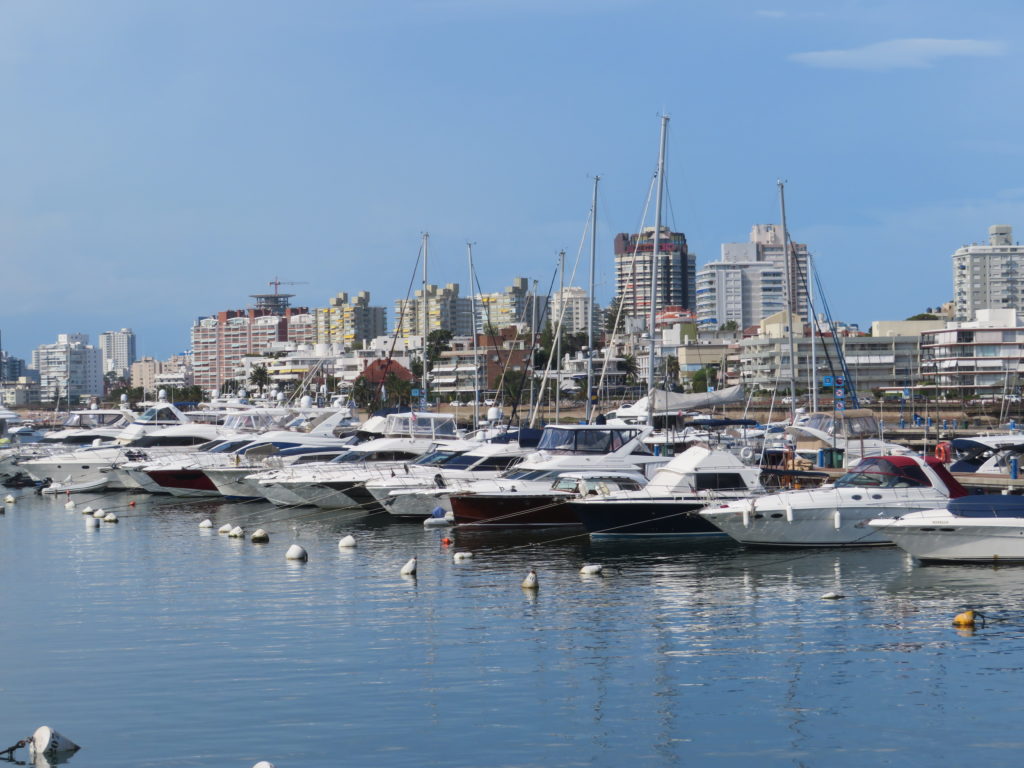
Principal Sites
Punta del Este is famous for the juxtaposition of its old-world charm with modern sophistication. In the older part of town, on the narrow spit of land, you’ll find landmarks like the El Faro de Punta del Este, a lighthouse built in 1860, and a blue church with a Caribbean vibe.
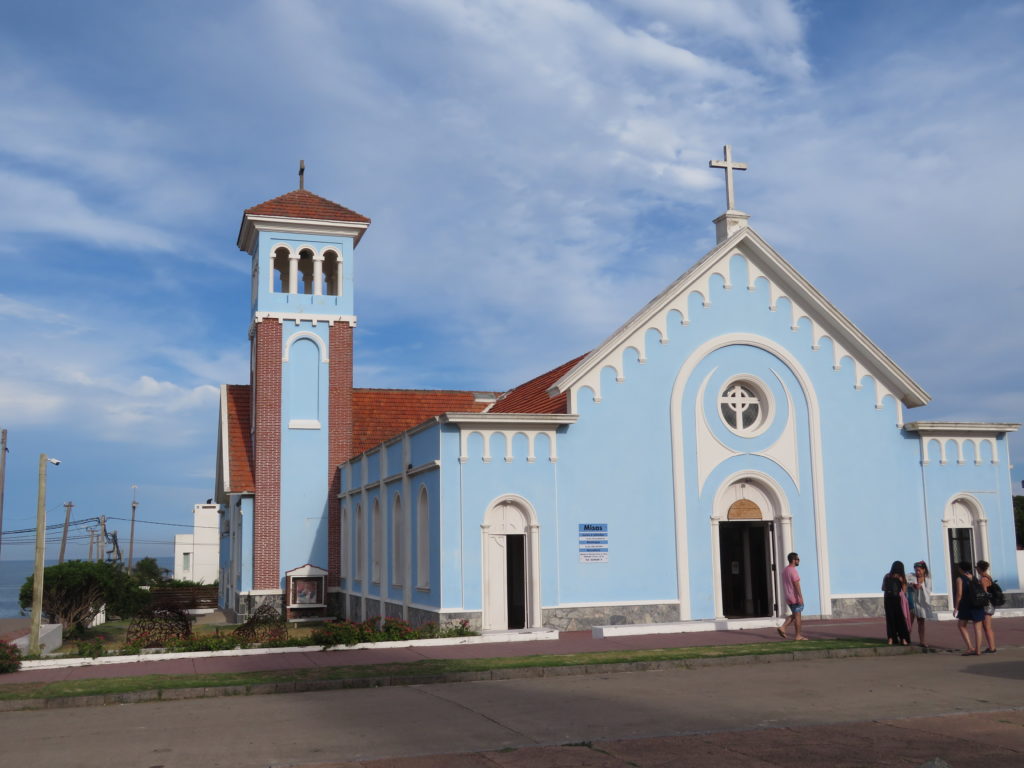
The modern section of the town is lined with sleek, towering apartment blocks, offering panoramic views of both the Atlantic Ocean and Río de la Plata. Behind these buildings lie elegant neighbourhoods filled with bungalows, swimming pools, and well-tended gardens, resembling upscale golf resorts.
Beaches and Harbour
Punta del Este’s coastline is nearly uninterrupted, save for its bustling harbour, which is filled with luxury yachts. The beaches themselves are famously clean and cater to a more refined, conservative crowd than Brazil’s more exuberant coastal resorts. Playa Brava, on the Atlantic side, is known for its rougher waves, perfect for surfers, while Playa Mansa, facing the Río de la Plata, offers calm waters and a more relaxed atmosphere. The harbour, with its gin palaces and opulent yachts, gives the city an air of cosmopolitan sophistication reminiscent of Europe’s most elite beach resorts.
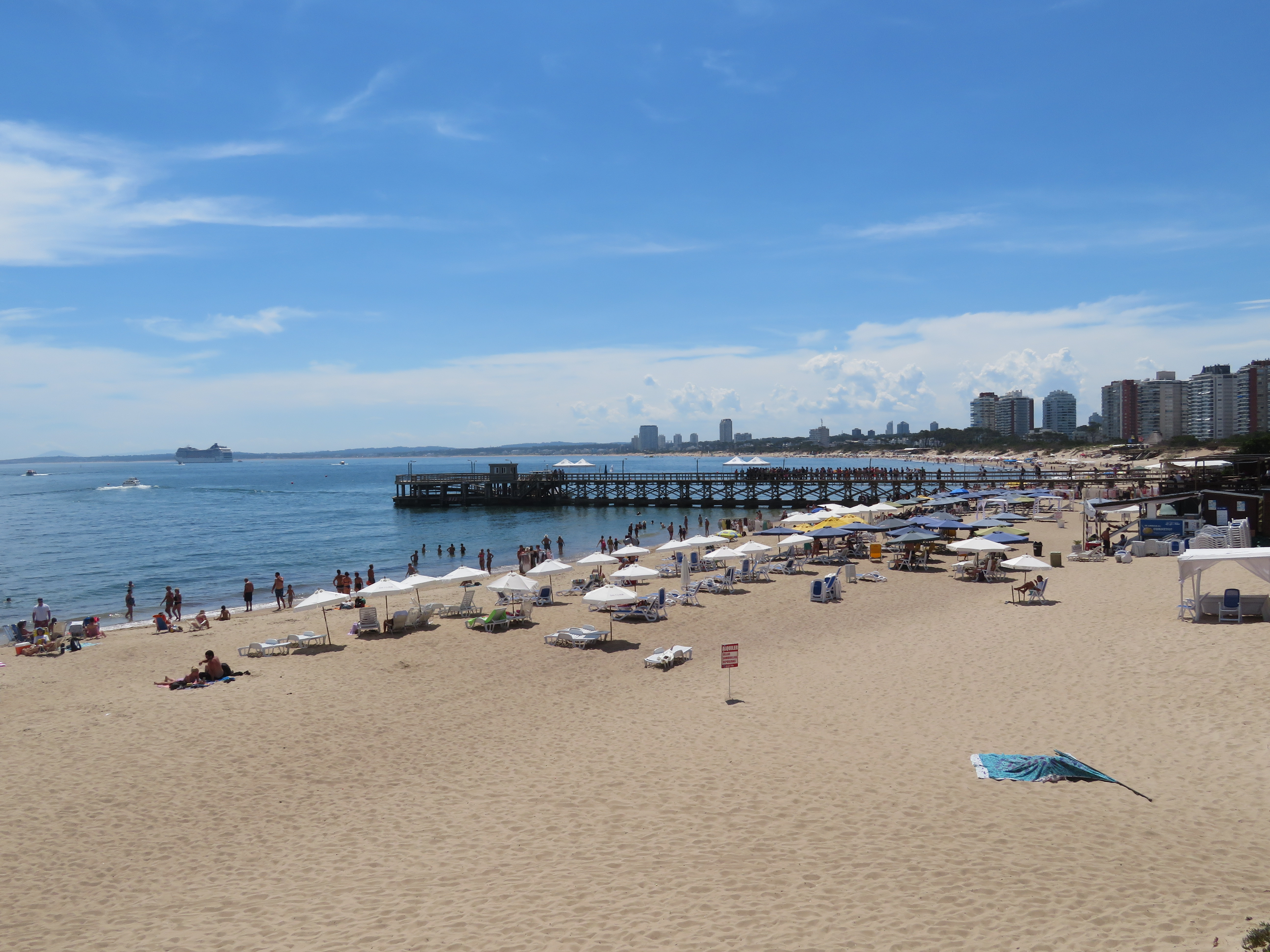
La Mano – Iconic Sculpture
One of the most recognisable landmarks in Punta del Este is La Mano, a massive sculpture of five fingers emerging from the sand at La Barra Beach. Created by Chilean artist Mario Irarrázabal, it symbolises humanity’s interaction with nature and serves as an iconic photo spot for visitors. Its remote location makes it a serene experience in the early mornings, especially for those arriving before the tourist crowds, where the sculpture stands solemnly against the crashing waves.
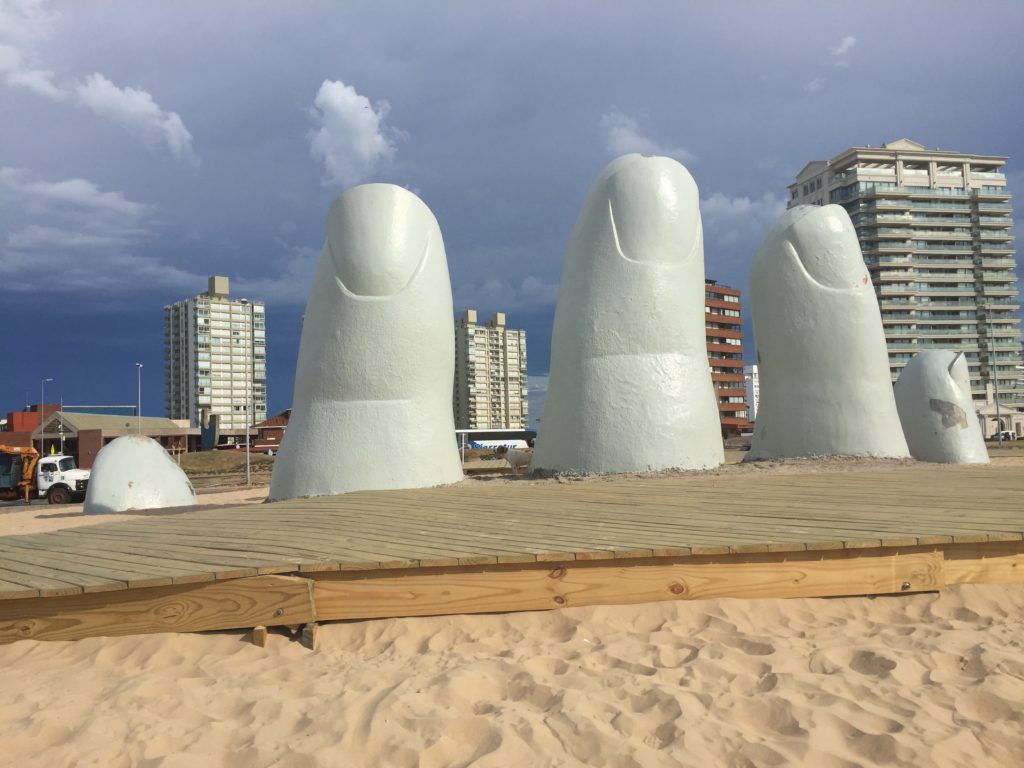
Social Responsibility on the Beaches
A standout feature of Punta del Este’s beaches is the attention given to accessibility for disabled visitors. Specialised wheelchairs and volunteers allow individuals with mobility issues to safely access the water. We were fortunate to witness a heart-warming example where a blind individual was guided into the sea by volunteers. This focus on inclusivity highlights Uruguay’s commitment to social responsibility, which we had not seen to the same extent in other places during our travels.
Environment
Punta del Este is notable for its balance between urban development and natural beauty. Its well-maintained beaches encircle the town, apart from the marina on the west side, where luxury yachts dominate the view. The beaches themselves are remarkably clean, though perhaps not quite to the same immaculate standard we saw in Florianópolis.
The landscape is enhanced by carefully manicured lawns and tree-lined streets, evoking the atmosphere of an exclusive coastal enclave. The natural beauty of the beaches, along with the orderly and polished surroundings, creates a perfect environment for relaxation.
Final Thoughts
Punta del Este is the epitome of elegance and order in South America. The city’s allure lies in its blend of old-world charm, exemplified by historic sites like the El Faro de Punta del Este lighthouse, and modern luxury, with its towering apartments and luxury hotels. Its pristine beaches, financial stability, and cultural sophistication make it a destination for both relaxation and investment. Whether you’re drawn by the famous La Mano sculpture, the high-end lifestyle, or the calm beaches, Punta del Este remains an exclusive and unforgettable gem on Uruguay’s Atlantic coast.
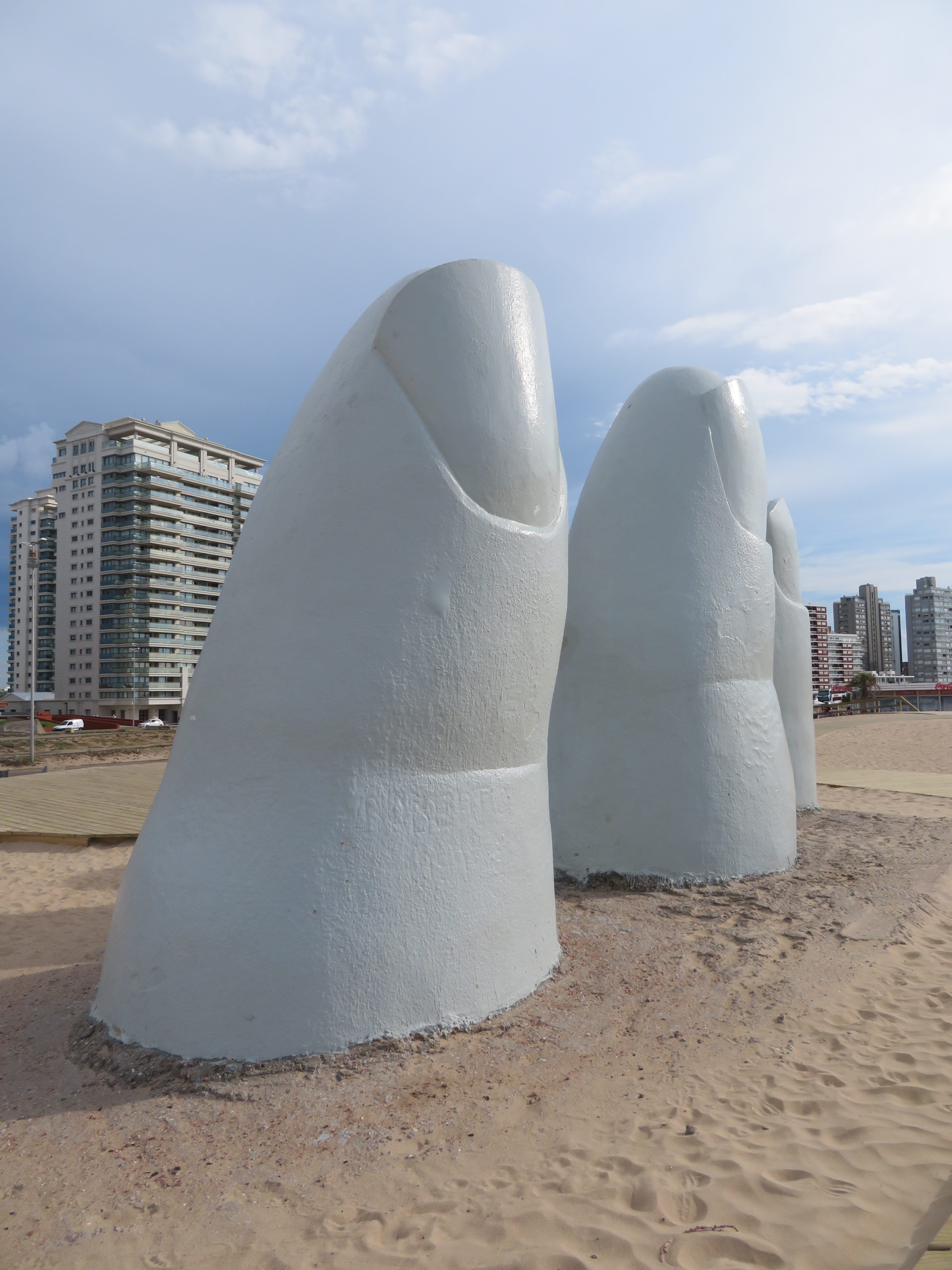
Date: 19/02/2018 to 21/02/2018
